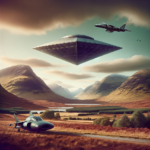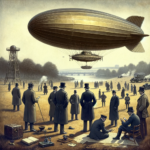The notion that 15th-century European art may hold depictions of unidentified flying objects (UFOs) challenges our understanding of history and art. Roberto Volterri, a Roman scientist and archaeologist, asserts that Italy’s Old Masters, renowned for their religious and naturalistic art, also captured images of what we might now recognize as UFOs. This article delves into the heart of this extraordinary claim, exploring the interplay between art, history, and the unexplained.
Historical Context of 15th Century Art
In 15th century Europe, particularly in Italy, art was undergoing a transformative period. The Renaissance was blossoming, bringing with it a renewed focus on realism, perspective, and human experience. Religious and mythological themes dominated the artistic landscape, often intertwined with a deep observation of the natural world. It is within this intricate tapestry that Volterri finds evidence of UFOs.
The Scientific and Artistic Milieu
The era was marked by a burgeoning scientific inquiry, which often coexisted with deep religious belief. Artists, many of whom were keen observers of nature and the cosmos, may have depicted phenomena that did not fit into the contemporary understanding of the world.
Roberto Volterri’s Claims
The Madonna and St John
Volterri points to “The Madonna and St John,” attributed to Fra Filippo Lippi, as a striking example. In this painting, a man and a dog seem to look towards a flying object near the Virgin Mary’s shoulder. To modern eyes, this object bears a resemblance to what is typically described as a UFO.
Scientific Analysis and Interpretation
Volterri, with his background in archaeology and metallic object analysis, suggests that such images might be more than mere artistic expressions. He argues that they could be historical records of sightings or experiences, albeit framed within the artistic and religious conventions of the time.
The Miracle of the Snow
Another painting, “The Miracle of the Snow” by Masolino da Panicale, depicts a biblical scene with peculiar cloud formations. Volterri draws parallels between these formations and modern photographs of cigar-shaped UFOs. He posits that these could be artistic representations of similar sightings.
Martin Kemp’s Counterarguments
Rational Explanations
Martin Kemp, a professor of the History of Art at Oxford University, offers a more conventional explanation. He suggests that what Volterri identifies as UFOs are, in fact, artistic interpretations of celestial or sacred phenomena. According to Kemp, the artists used their creativity to depict divine or supernatural elements, rather than documenting extraterrestrial sightings.
Artistic License and Symbolism
Kemp emphasizes the use of symbolism and artistic license in Renaissance art. He argues that the objects in these paintings are consistent with the stylistic and symbolic norms of the time, rather than being representations of actual physical objects or events.
Analyzing Other Artworks
Glorification of the Eucharist
“Glorification of the Eucharist” by Bonaventura Salimbeni, another painting cited by Volterri, shows an object resembling a modern satellite. Volterri draws comparisons to the Russian Sputnik, suggesting a prophetic quality to the artwork.
Artistic Imagination or Historical Record?
The debate extends to whether these artists, through their imagination or divine inspiration, could have envisioned technologies and objects far beyond their time, or whether they were actually recording observations of unexplained aerial phenomena.
La Tebaide by Paolo Uccello
In “La Tebaide,” Paolo Uccello portrays scenes with objects that Volterri equates to UFO photographs from the 1950s and 1960s in the US. The resemblance raises questions about the nature of these objects – were they mere artistic elements, or something more?
Bridging Art and Unexplained Phenomena
The Role of Interpretation
The interpretation of art, especially from historical periods, is inherently subjective. While some see divine inspiration, others may perceive glimpses into historical realities that challenge our understanding of the past.
The Limitations of Contemporary Understanding
One of the challenges in interpreting these artworks is the limitation of contemporary understanding. What might have been inexplicable in the 15th century could have different explanations today, yet some phenomena remain unexplained, leaving room for speculation.
The presence of UFO-like imagery in 15th-century paintings opens a fascinating dialogue between art, history, and the unexplained. Whether these images are artistic expressions of divine phenomena, imaginative projections, or actual sightings of unexplained aerial objects remains a subject of debate. What is clear is that these artworks offer a window into the complex interplay of science, religion, and art in



